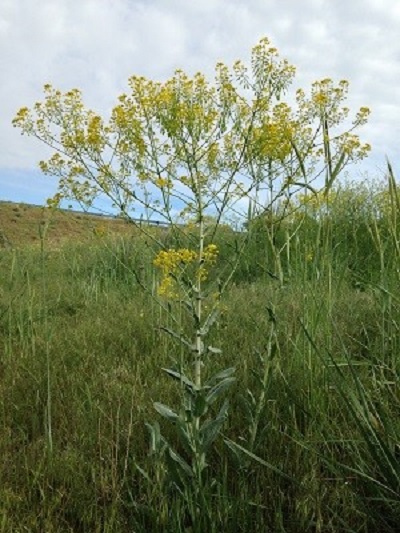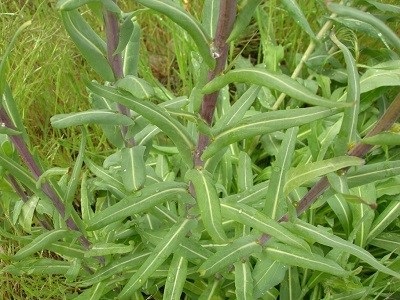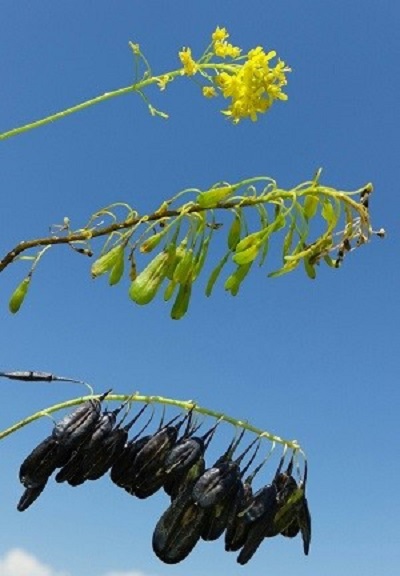Dyer's woad- February 2019
Download weed post on dyer's woad as a PDF (contains crossword puzzle)

Photo by Noelle Orloff.
Introduction
The history of dyer’s woad in Montana can be considered a success story. It was originally found in Missoula county in 1934 and has since been found in 19 counties. However, with an early detection and rapid response strategy, dyer’s woad has been eradicated from 12 counties. Populations are now monitored and managed in Beaverhead, Flathead, Missoula, Park, Lewis & Clark, Stillwater, and Treasure counties. Dyer’s woad is a priority 1A noxious weed in Montana, meaning management priorities are prevention, early detection, and eradication.
Identification and biology

Photo by Amber Burch.
Dyer’s woad is in the mustard family (Brassicaceae) and usually grows as a biennial. This means it forms a rosette in the first year and flowers, sets seed, and dies the second year. Plants are usually 1-4 feet tall and have a long, sturdy taproot that can be up to five feet deep. Leaves are bluish-green and have a cream or white colored vein in the middle. Young rosette leaves have short, soft hairs while mature stem leaves are hairless and clasp the stem. Leaves are somewhat rubbery and have a cabbage-like texture. Dyer’s woad has small, yellow flowers with four petals and are arranged in clusters with a flat-top appearance. Seed pods hang in a unique pendulum-like manner. Seed pods turn from green to dark purple or black as they mature.
Habitat and spread

Photo by Amber Burch.
Dyer’s woad grows best on rocky, dry soils in highly disturbed habitats such as roadsides, fence lines, pastures, and railroad rights-of-ways. This species reproduces mostly by seeds which are produced from early summer through fall. Field evidence suggests the plant is mildly rhizomatous.
Management
Dyer’s woad can reduce the productivity of rangeland, pasture, and cropland systems. In order to reduce the spread and impacts of this noxious weed, management in Montana is currently coordinated by the Montana Dyer’s Woad Cooperative Project. Management priorities are education, prevention, and eradication. Known plant populations within the state are monitored by cooperators and detection dogs. Each year, plants are hand-pulled or treated with herbicides. If hand-pulling plants with seed pods, it is best to bag them securely and dispose of them in the garbage. It is important to clean vehicles, equipment, and outdoor gear to prevent new infestations via seed spread. If you think you may have found dyer’s woad, contact your local weed coordinator or Amber Burch of the Montana Dyer’s Woad Task Force at 406-925-1346. If you find a new population that is more than ½ mile from a known population, there is a $50 bounty available.
For more information see the dyer's woad fact sheet MT201820AG
